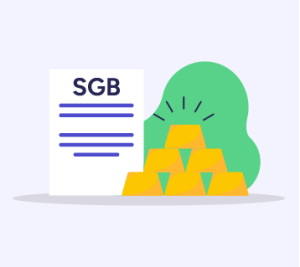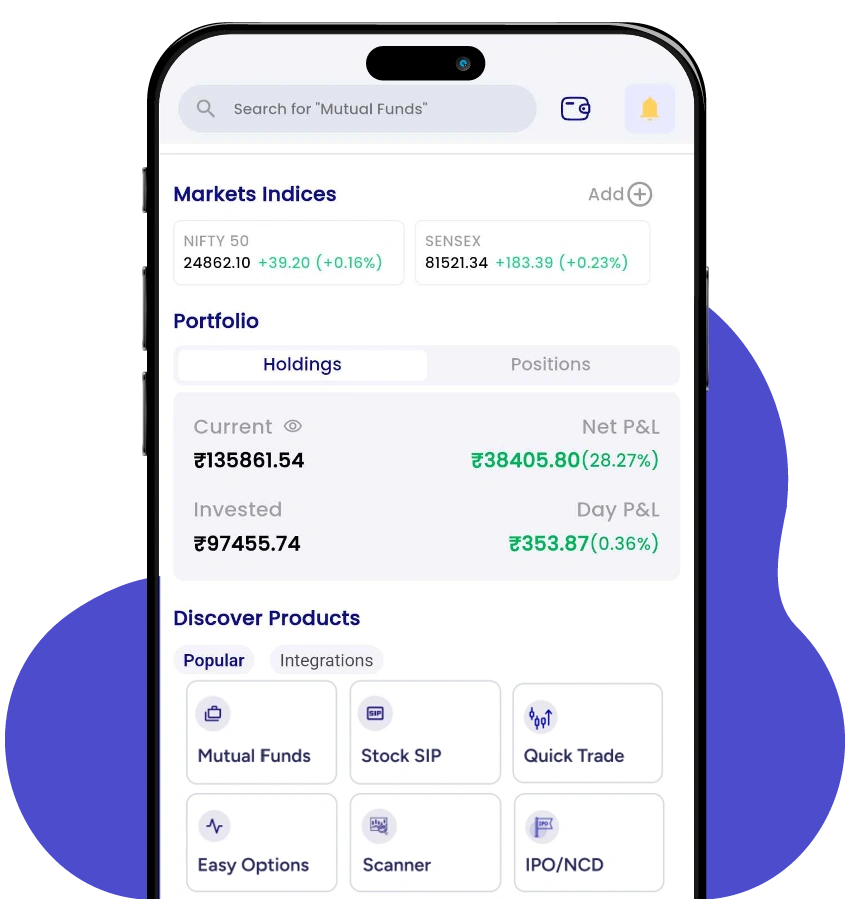Paper Gold
- 14th August 2025
- 12:00 AM
- 8 min read
Did you know you can invest in gold without ever holding a coin or bar in your hand? That is how paper gold works. Due to multiple factors, the gold prices in India are continuously increasing. As of August 2025, 10 grams of 24-carat gold cost around INR 1,09,724.
This blog provides a beginner’s guide on what is paper gold, how it works, and the benefits of investing in it.
What Does Paper Gold Mean?
Paper gold is an asset that replicates the price of gold but is not real gold. Unlike physical gold, paper gold is traded digitally on the financial markets. This type of asset is beneficial for trading rather than long-term investing. It gives you exposure to the price of gold without requiring you to hold actual metal.
Paper gold includes the majority of exchange-traded funds, gold certificates, pool accounts, and gold futures accounts. It offers safety since people do not want to keep real gold at home after buying it due to safety concerns.
How Does Paper Gold Function?
Paper gold enables investors to buy units or shares in financial instruments that represent the value of gold. Real gold or gold derivatives back these financial instruments. They provide investors with exposure to changes in the price of the asset without requiring them to physically own the metal, as their value varies in tandem with the market price of the commodity.
You effectively get a share of the underlying assets when you invest in paper gold. These assets are managed by financial institutions. In addition, the entire process offers investors liquidity and convenience by making it hassle-free to purchase, sell, and hold the asset.
Different Forms of Paper Gold
If you are buying gold for the first time, you might be confused about how to buy it. First of all, you must open a trading account. For this, you can download the PL Capital Group – Prabhudas Lilladher application or the PL DigiTrade application. PL offers a smooth trading platform for investing in commodities like gold.
After that, you have to finalise which form of gold you should choose for investing:
-
ETF
You can trade gold Exchange Traded Funds (ETFs) on stock exchanges. This allows you to own gold bullion or derivatives that are strongly correlated with the value of the precious metal. They track the price of gold. ETFs are straightforward to buy and sell on the stock market, making them affordable and easily accessible.
-
Mutual Funds
Gold mutual funds are another form of purchasing paper gold, which are managed by asset management companies that invest in gold ETFs or mining companies. You can invest in them through a systematic investment plan (SIP) or a lump sum through an online broker.
-
Sovereign Gold Bonds
You can also invest in sovereign gold bonds (SGB) because of their capacity to reduce the risk of theft. SGBs are valued in gold grams, making a strong substitute for real gold. Since the investor receives the current market price at the time of redemption, SGBs provide the guarantee that the quantity of gold deposited will be preserved. It is one of the primary benefits of investing in SGBs.
-
Digital Gold
Digital gold can be an ideal investment option for you, which helps you buy the valuable metal more easily. You may now easily buy gold coins, bars, and jewellery from your home due to the development of online platforms. Due to the online transaction, digital gold transactions closely replicate the purchasing procedure of real gold.
Is Investing in Paper Gold Safe?
Generally, paper gold is regarded as safe. It provides minimal operating risks, higher security, and diversification. However, you might want to take note of the following if you want to buy in paper gold:
- The price of paper gold is in line with global gold prices and is subject to macroeconomic developments. Any fluctuations in the market can affect the prices.
- Although it is more liquid than physical assets, redemption procedures for securities like SGBs may lock in money for certain periods.
- Ensure you verify that the financial institutions govern the trading applications you are using.
Advantages of Investing in Paper Gold
Investing in paper gold not only keeps the asset safe but also allows you to hedge against inflation. Here are some benefits of investing in paper gold:
-
Diversification
By offering a hedge against currency depreciation and market volatility, paper gold provides stability for your portfolio. Additionally, it can aid with portfolio diversification.
-
Accessibility
You can easily purchase and sell paper gold through online trading apps frequently with only a few clicks.
-
Non-Physical Ownership
You can avoid the hassles of real gold ownership, including storage, security, and insurance issues, by using paper gold.
-
Trading Potential
Instead of being a long-term investment prospect, paper gold is more beneficial for trading. You may take advantage of short-term price fluctuations and leverage possible profit opportunities by using gold ETFs or derivatives.
-
Cost Effective
Investing in paper gold usually has cheaper operating costs because you do not have to store it.
Key Considerations for Paper Gold Investing
While there are many advantages of investing in paper gold, you must consider the following:
- Paper gold lacks the tangible worth of the precious metal, in contrast to genuine gold. This poses an inherent risk because the value of this asset form depends on several factors, such as market demand.
- Traders frequently use paper gold to profit from short-term price movements. Alternative investment options can be more beneficial for long-term investors wanting the stability and security of real gold.
- Paper gold is exposed to market volatility, just like any other investment. Changes in the price of gold may have a positive or negative effect on the value of paper gold instruments.
Paper Gold vs Physical Gold – Key Differences
| Parameters | Physical gold | Paper gold |
| Storage Cost | You need to store physical gold in a vault or a locker, which includes additional costs. | Owning paper gold is entirely digital, which eliminates the risk of theft. You do not have to pay any cost for its security. |
| Liquidity | Long time and logistical costs. | Easier to buy and sell. |
| Purity | May include purity concerns and weight discrepancies. | Equivalent value without any discrepancies. |
| Capital Requirements | Requires high capital. | It can be started with a minimum amount. |
| Depreciation | The value might decrease while using it. | Does not decrease while using. |
Final Thought
Paper gold is an asset that represents the price variations of gold. This allows investors to take advantage of price changes in gold without actually owning the metal. Investors should carefully evaluate the lack of physical backing and the risks associated with market volatility.
Open a trading account with PL Capital and invest in the SGBs in the smartest way. You can avail numerous benefits, including an assured interest income of 2.5% per annum.
Frequently Asked Questions
1. Is paper gold real gold?
Paper gold is a type of asset that symbolises the price of gold but is not real gold. It is not composed of real metal; instead, it is only worth paper.
2. How does one calculate the price of paper gold?
You can calculate the price of paper gold by considering the global gold market prices. It takes into account factors including inflation, currency value, interest rates, and geopolitical events, all of which affect the price of paper gold.
3. Is it possible to convert paper gold into real gold?
No, it is not possible to convert paper gold into real gold since it is not composed of real metal.
4. Does paper gold have any applicable taxes?
Yes, paper gold will be subject to a 12.5% tax on sale, the same as digital and real gold.





